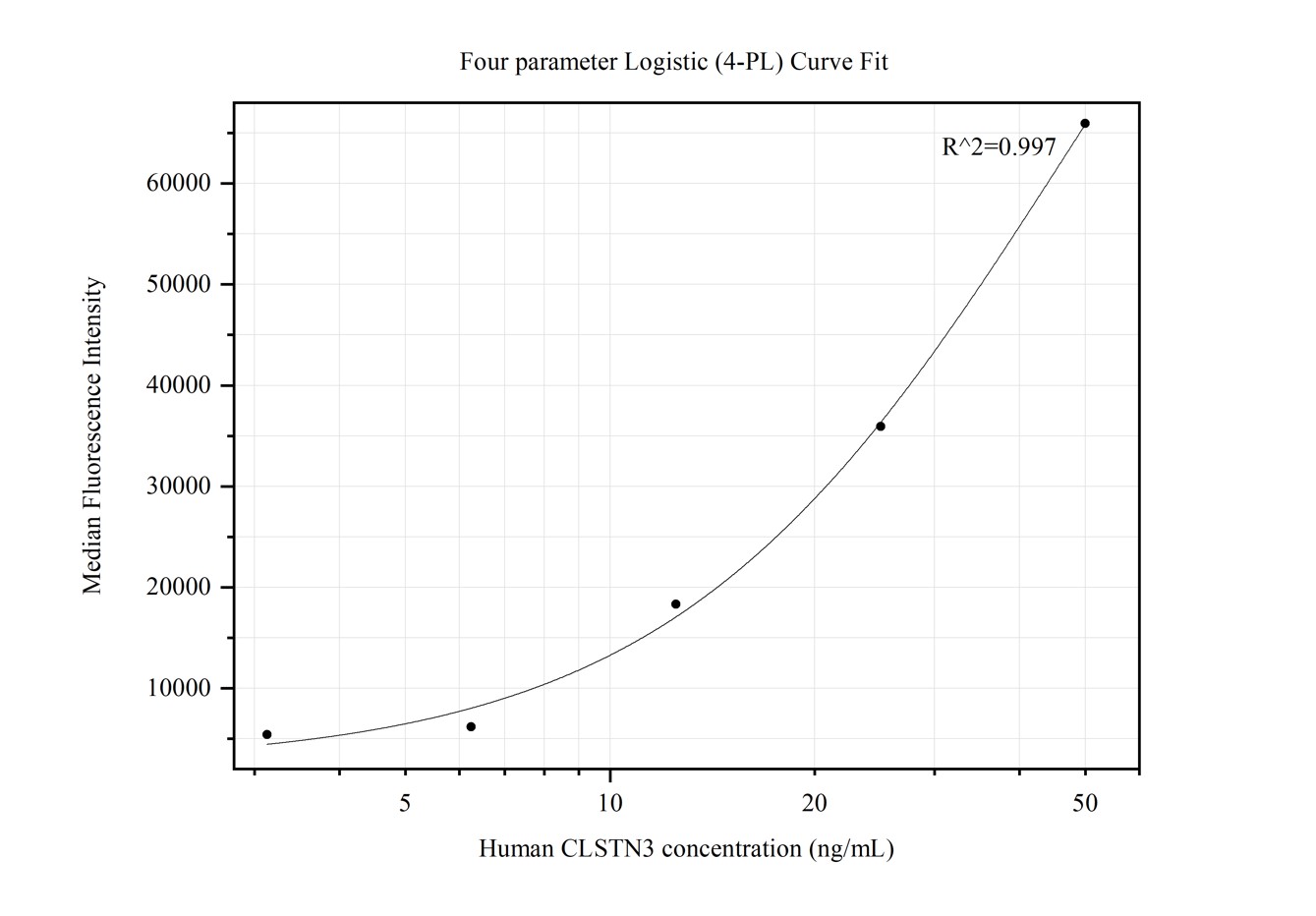CLSTN3 Monoclonal antibody, PBS Only (Capture)
CLSTN3 Monoclonal Antibody for Cytometric bead array, Indirect ELISA
Host / Isotype
Mouse / IgG1
Reactivity
human
Applications
Cytometric bead array, Indirect ELISA
Conjugate
Unconjugated
CloneNo.
3D4F8
验证数据展示
产品信息
68855-3-PBS targets CLSTN3 as part of a matched antibody pair:
MP50250-2: 68855-3-PBS capture and 68855-2-PBS detection (validated in Cytometric bead array)
Unconjugated mouse monoclonal antibody pair in PBS only (BSA and azide free) storage buffer at a concentration of 1 mg/mL, ready for conjugation.
This conjugation ready format makes antibodies ideal for use in many applications including: ELISAs, multiplex assays requiring matched pairs, mass cytometry, and multiplex imaging applications.Antibody use should be optimized by the end user for each application and assay.
| Tested Applications | Cytometric bead array, Indirect ELISA Application Description |
| Tested Reactivity | human |
| Immunogen | CLSTN3 fusion protein Ag14897 种属同源性预测 |
| Host / Isotype | Mouse / IgG1 |
| Class | Monoclonal |
| Type | Antibody |
| Full Name | calsyntenin 3 |
| Synonyms | Alc-beta, alcbeta, Alcadein-beta, Alcadein beta, Alc beta |
| Calculated Molecular Weight | 968 aa, 107 kDa |
| GenBank Accession Number | BC039075 |
| Gene Symbol | CLSTN3 |
| Gene ID (NCBI) | 9746 |
| Conjugate | Unconjugated |
| Form | Liquid |
| Purification Method | Protein G Magarose purification |
| UNIPROT ID | Q9BQT9 |
| Storage Buffer | PBS Only |
| Storage Conditions | Store at -80°C. The product is shipped with ice packs. Upon receipt, store it immediately at -80°C |
